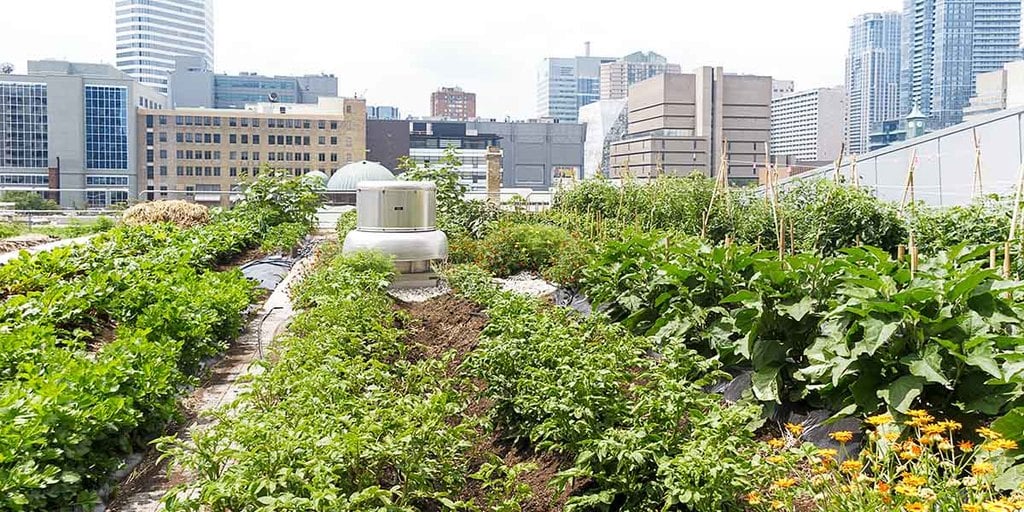City Blooming Fundamentals Explained
City Blooming Fundamentals Explained
Blog Article
Some Known Questions About City Blooming.
Table of ContentsThe 4-Minute Rule for City BloomingAbout City BloomingThe smart Trick of City Blooming That Nobody is DiscussingAll about City BloomingSome Known Factual Statements About City Blooming
Intrigued in expanding food for sale in the City of Chicago? Below is a listing of regularly asked concerns concerning the regulations and policies that growers need to think about when planning an urban agriculture job.
The zoning modification does not customize any various other codes taking care of composting, structure licenses, purchasing or leasing City owned residential or commercial property, company licenses or ecological contamination. There are existing codes that regulate these concerns and they remain in complete result and may apply to your job. Area yards are commonly owned or handled by public entities, public companies or community-based companies and maintained by volunteers.
Urban farms expand food that is intended to be marketed, either on a nonprofit or for-profit basis. Because of their business function, metropolitan ranches call for a company permit. Yes. A community yard is permitted to market surplus produce that was grown on site if the sales are accessory or secondary to the yard's key purpose explained above.
The 7-Second Trick For City Blooming
The quantity of compost material can not exceed 25 cubic lawns at any offered time according to the standards in 7-28-715 of the City's Municipal Code. Due to the fact that the dirt at most brand-new yard websites needs modifying, compost, dirt, wood chips, or other products can be gotten to construct or improve the growing space.

If a structure license is needed after that the hoophouse will certainly be thought about an accessory building. You can locate out even more regarding the structure license needs by getting in touch with the Department of Structures. The 25,000-square-foot size limit is planned to stop a single area yard from dominating a provided block or interfering with the block's existing property or commercial personality.
The limit does not use to gardens located in Public Open Room (POS) areas. Can there be more than one area yard that is 25,000 square feet on a single block? Fence is not required, nonetheless, yards that have large car park areas may be required to set up secure fencing or other landscape design functions.
An Unbiased View of City Blooming
B1 & B2 districts require that all business use tasks be performed indoors. Is fence required for city ranches? Fencings may be required, along with landscape design and testing, for specific parking locations and outdoor work or storage space areas depending on location and the details task taking place.
Urban ranches require structure authorizations and zoning authorizations prior to building (landscaping). Other types of city testimonial might be needed depending on particular structures, tasks, dimension, landscape design, licensing, public health and stormwater monitoring issues.
The Department of Service Matters and Customer Security can assist determine the certain kind of business his comment is here license that's required. Off road vehicle parking is needed for most commercial projects in Chicago. The needed number of car park rooms is based on the number of employees functioning on website and not the square video of the expanding space.
Rumored Buzz on City Blooming

A city ranch can sell garden compost product created on website, nonetheless, the procedure needs to abide with the regulations in 7-28-715 of the Chicago Municipal Code. Aquaponic systems are allowed inside your home on city farms in numerous zoning areas.
Up to 5 hives or swarms of honey may be maintained as an accessory usage. Beekeepers have to sign up with the Illinois Department of Agriculture. For additional information about the proposed zoning amendment you may call the Division of Real Estate and Economic Development, Bureau of Planning and Zoning at 312.744.8563.
Farming in cities and city areas A metropolitan farm in Chicago. Urban agriculture refers to numerous methods of cultivating. http://go.bubbl.us/e31e8c/192c?/City-Blooming, processing, and distributing food in urban areas. The term additionally puts on the location activities of pet husbandry, aquaculture, beekeeping, and cultivation in an urban context. Urban agriculture is distinguished from peri-urban farming, which occurs in rural locations beside suburbs.
The 8-Second Trick For City Blooming
, that seek to create social networks founded on a shared ethos of nature and neighborhood holism. These networks can create by method of formal institutional support, ending up being incorporated into neighborhood town planning as a "shift community" motion for lasting metropolitan development.
Some of the first evidence of urban agriculture comes from Mesopotamia.
Report this page